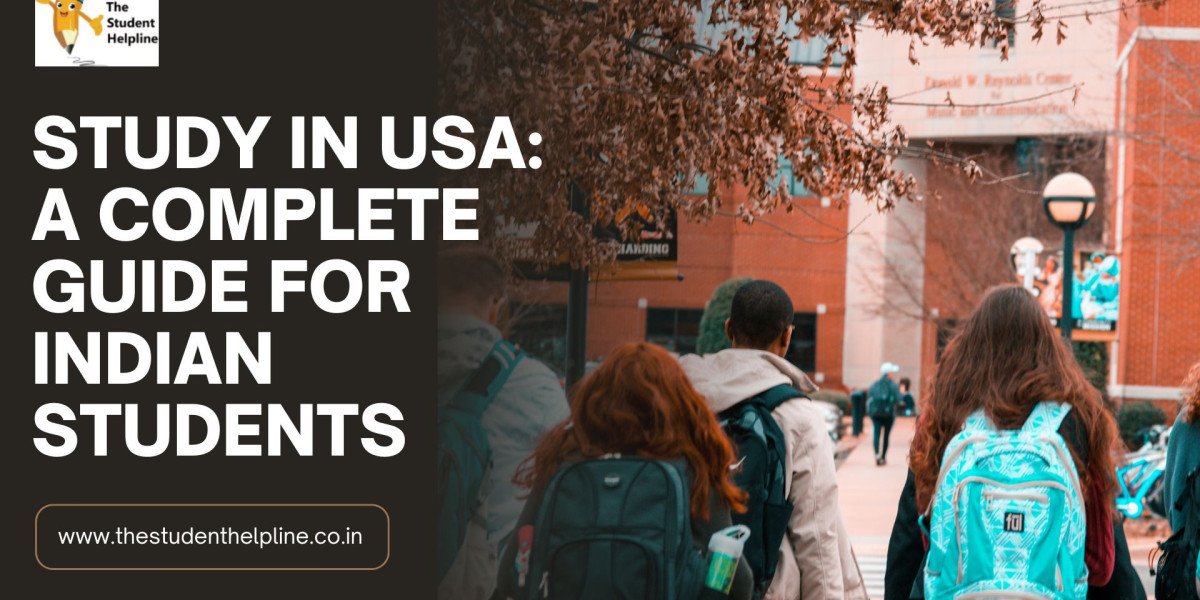The United States is home to some of the world's most prestigious universities and offers a wide range of programs that cater to almost every academic and professional interest. For Indian students, studying in the USA presents opportunities for top-tier education, global exposure, and career advancement. However, navigating the path to study in USA can be overwhelming. This guide will walk you through everything you need to know as an Indian student planning to pursue higher education in America.
Why Study in the USA?
The USA remains one of the most popular destinations for international students, and here's why:
- Quality Education : American universities are known for their academic rigor and cutting-edge research. The country is home to Ivy League schools, top research institutions, and specialized colleges.
- Diverse Programs : Whether you're interested in engineering, business, medicine, or the arts, the USA offers a wide variety of programs across multiple disciplines.
- Global Exposure : Studying in the USA allows you to interact with students from all over the world, providing you with a global perspective and enhancing your cultural awareness.
- Career Opportunities : Graduating from a US university can open doors to numerous job opportunities, both in the United States and globally. Many universities have strong ties with industry leaders, offering internships and job placement services.
Choosing the Right Program and University
One of the first steps in your study-abroad journey is selecting the right program and university. The USA offers undergraduate, graduate, and doctoral programs across various fields.
Undergraduate Programs (Bachelor's Degree)
For those coming directly after completing their higher secondary education in India, a bachelor's degree in the USA typically takes four years to complete. Popular areas of study include:
- Engineering : Computer Science, Electrical Engineering, Mechanical Engineering
- Business : Business Administration, Economics, Marketing
- Liberal Arts : Psychology, Political Science, History
During the undergraduate years, students usually spend the first two years exploring various subjects before declaring a major.
Graduate Programs (Master's and PhD)
If you have already completed an undergraduate degree in India, pursuing a master's degree or a PhD in the USA can provide advanced knowledge in your field. These programs usually range from one to two years for a master's degree and four to six years for a PhD.
- Master of Science (MS) : Common among engineering, technology, and science students.
- Master of Business Administration (MBA) : A top choice for those looking to advance in the business world.
- PhD : Suitable for students aiming for careers in academia or advanced research.
When choosing a program, consider factors such as the curriculum, faculty, research opportunities, and the university's reputation in your chosen field.
Admission Requirements
Each university in the USA has its own set of admission requirements, which vary depending on the level of study and the program. However, there are some common elements that most universities require:
Academic Transcripts : Indian students must provide transcripts from their previous education, whether from school (for undergraduate programs) or university (for graduate programs). The grading system in India may differ from the USA, so ensure your transcripts are evaluated accordingly.
Standardized Tests : Depending on the program, you may need to take standardized tests like:
- SAT/ACT : Required for most undergraduate admissions.
- GRE/GMAT : Common for graduate program admissions (GRE for most programs and GMAT for business schools).
- TOEFL/IELTS : Proof of English language proficiency, required for non-native English speakers.
Statement of Purpose (SOP) : A critical part of the application, the SOP is your opportunity to explain your academic and career goals and why you want to study in the USA.
Letters of Recommendation : Universities often require two or three recommendation letters from teachers, professors, or employers who can attest to your academic and personal qualities.
Resume/CV : For graduate programs, a detailed resume or curriculum vitae that highlights your academic and professional achievements is essential.
Financial Planning
Studying in the USA can be a significant financial investment, but with proper planning, it can be manageable. The costs include:
- Tuition Fees : Tuition varies greatly depending on the university, program, and state. Public universities generally have lower tuition fees compared to private institutions.
- Living Expenses : You'll need to account for accommodation, food, transportation, and other day-to-day expenses. Living in urban areas or close to major cities can be more expensive than living in smaller towns.
- Health Insurance : Health insurance is mandatory for international students in the USA. Many universities offer their own insurance plans, or you can purchase a plan from a private provider.
Scholarships and Financial Aid
For Indian students, there are several scholarship options available to help cover the costs of studying in the USA. These can be merit-based, need-based, or specific to your field of study. Some common scholarships for Indian students include:
- Fulbright-Nehru Fellowships : For master's and doctoral-level studies.
- Inlaks Shivdasani Foundation Scholarships : For specific areas of study.
- Tata Scholarship : For undergraduate students.
Make sure to research and apply for scholarships early, as many have strict deadlines.
Visa Process for Indian Students
Once you receive your admission letter from a US university, the next step is applying for a student visa. The most common visa types for Indian students are:
- F-1 Visa : For students attending an academic program at a US university or college.
- M-1 Visa : For students attending vocational or technical schools.
Steps to Apply for a Student Visa
Receive the Form I-20 : After accepting your offer of admission, your university will send you the Form I-20, which you will need to apply for an F-1 visa.
Pay the SEVIS Fee : The Student and Exchange Visitor Information System (SEVIS) fee must be paid online. Keep the receipt for your visa interview.
Complete the DS-160 Form : This is the online visa application form. You will need to upload a passport-sized photo and submit the form.
Schedule a Visa Interview : Book an appointment for a visa interview at the US embassy or consulate in India.
Attend the Visa Interview : Bring your Form I-20, DS-160 confirmation page, SEVIS fee receipt, passport, financial documents, and university admission letter to the interview. Be prepared to answer questions about your choice of study, university, and future plans.
Visa Approval : Once your visa is approved, you will receive your passport with the visa stamped in it. You can now make travel arrangements to the USA.
Preparing for Life in the USA
Moving to a new country can be exciting yet challenging. Here are some tips to help you prepare for life as a student in the USA:
Accommodation : Most universities offer on-campus housing for international students, which can be a convenient and safe option, especially for the first year. If you prefer to live off-campus, start looking for housing options early. Websites and social media groups can help you connect with other students and find shared accommodations.
Cultural Adjustment : The USA is a culturally diverse country, but adjusting to a new environment can take time. Be open to meeting new people, participating in campus activities, and learning about different cultures. Many universities offer orientation programs and support services to help international students settle in.
Banking and Finances : Open a US bank account as soon as possible to manage your finances. Most banks offer special accounts for students with minimal fees. Additionally, familiarize yourself with US currency, credit card usage, and budgeting tools.
Transportation : Depending on your university's location, you may need to rely on public transportation, cycling, or driving. If you plan to drive, you'll need to obtain a US driver's license, which may require taking a written and practical driving test.
Healthcare : Health insurance is essential, and most universities require students to have it. Make sure to understand how your health insurance works, including coverage for routine medical care, emergencies, and prescriptions.
Part-Time Work : As an international student on an F-1 visa, you are allowed to work part-time on-campus for up to 20 hours per week during the academic year. During breaks, you may be able to work full-time. Working part-time can help you gain valuable experience and supplement your finances, but be sure to prioritize your studies.
Academic Life in the USA
The academic system in the USA may differ from what you're used to in India. Here are some aspects to consider:
Class Structure : US universities often have a mix of lectures, seminars, and lab sessions. Classes may be interactive, and students are encouraged to participate in discussions, ask questions, and collaborate on projects.
Grading System : The grading system in the USA typically uses letter grades (A, B, C, D, F) with corresponding grade point averages (GPA) on a scale of 4.0. Many universities also use a continuous assessment method, meaning that your performance throughout the semester (quizzes, assignments, presentations) will contribute to your final grade.
Research Opportunities : If you're pursuing a graduate or doctoral degree, research will be a significant part of your academic life. US universities offer excellent research facilities, and you'll have the opportunity to work alongside experts in your field. Be proactive in seeking out research assistantships or opportunities to collaborate with faculty.
 AdBlock Detectado
AdBlock Detectado








